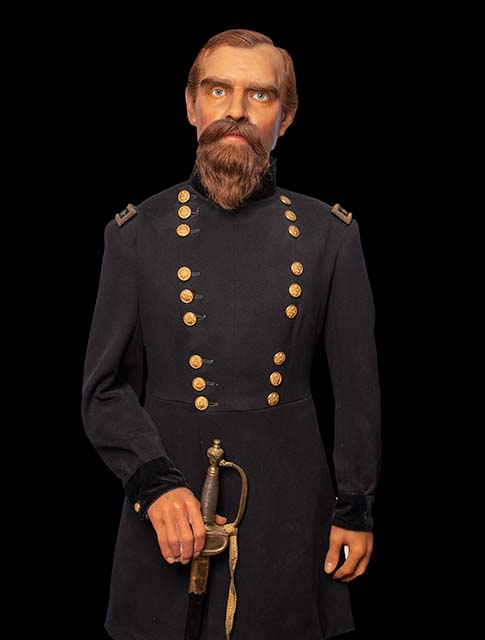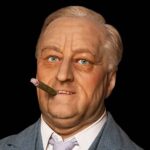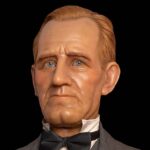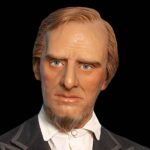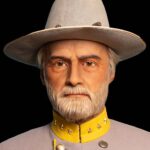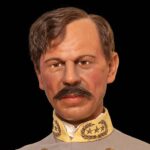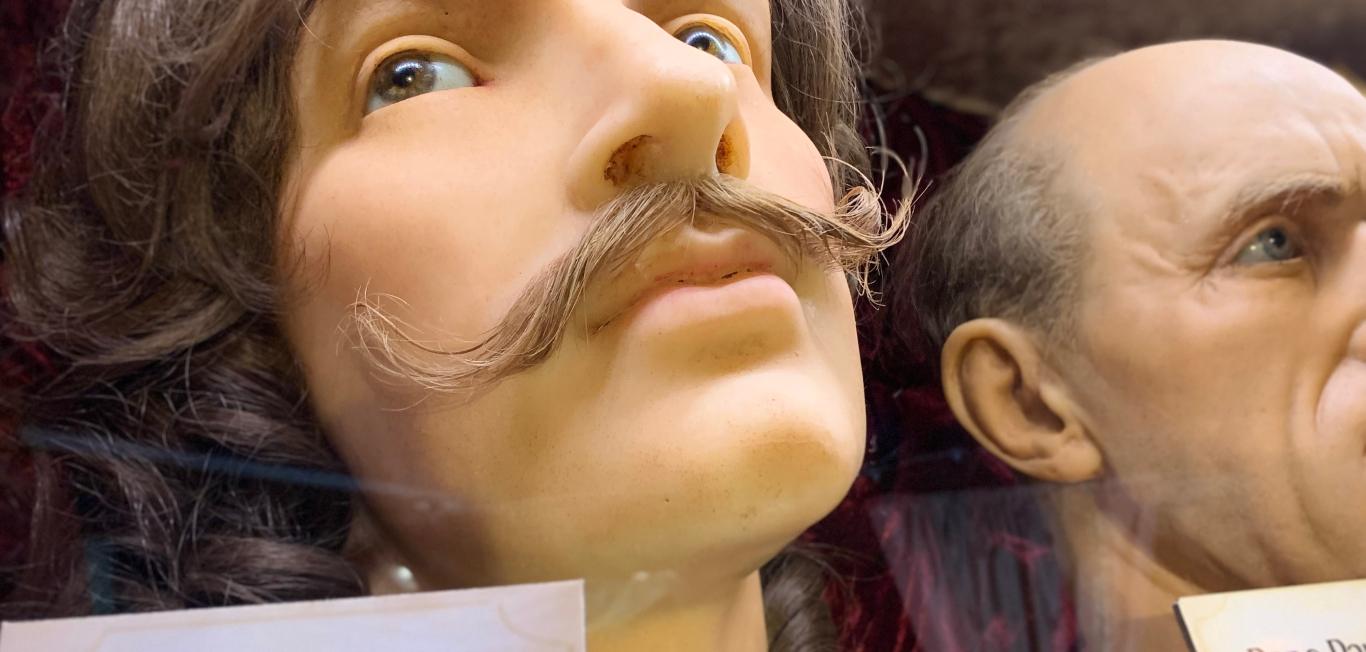History Of Lew Wallace
General Lew Wallace’s biography is filled with examples of a life led with commitment, service and inspiration. Lew Wallace was born in Brookville, Indiana, on April 10, 1827, to David Wallace and Esther French Test. The life of Lew Wallace’s father, David Wallace, foreshadowed his own destiny, as David was a graduate of the U.S. Military Academy, practiced law and was an established politician in the state of Indiana. Lew Wallace never attained a proper education, but he was an avid reader and self-educated, allowing him to begin working at the age of 16.
At the start of 1846, the Mexican-American War was underway. Wallace joined the military and began his career as a serviceman. By June of that year, he was designated the second lieutenant of Company H, 1st Indiana Volunteer Infantry. After a year of volunteer service, Wallace returned home and became a member of the Indiana Bar in 1849. In the 13 years between the Mexican-American War and the American Civil War, Wallace married Susan Arnold Elston, welcomed a son into the world, opened a law practice and began a career in politics. Lew Wallace held several political roles, including a two-year term in the Indiana Senate, as governor of the Territory of New Mexico and as a diplomat to the Ottoman Empire.
DID YOU KNOW?
Lew Wallace held several political roles, including a two-year term in the Indiana Senate.
When the American Civil War commenced, Wallace joined the military full-time and began his duties after the attack on Fort Sumter. Lew Wallace was a member of the Union and helped recruit volunteers for the army under an agreement that he would have his pick of a regiment to command. Throughout Wallace’s installment in the Union Army, he had several achievements, the most notable being the conquering of Fort Henry, his promotion as the youngest major general for the Union Army at the age of 34, and the North’s victory in the Battle of Shiloh. General Lew Wallace’s biography in military service came to a close when he retired in 1865, after providing assistance as major general to the Mexican army.
In 1843, Lew Wallace started his writing career with his first narrative, The Fair God. Throughout his lifetime, Wallace would write a total of seven works, with Ben-Hur: A Tale of Christ becoming his most notable novel. Ben-Hur brought fame and wealth to Lew Wallace, as it became a bestselling novel and was later adapted into three screenplays. By the time of his death in 1905, he had only one narrative left to finish: his autobiography.
Interesting Facts About Lew Wallace
David and Esther French (Test) Wallace had four sons; Lew is the second eldest of the Wallace children.
Prior to Lew Wallace’s father, David Wallace, succeeding in politics as the sixth governor of Indiana and a U.S. congressman, he graduated from the United States Military Academy.
At the age of six, Lew Wallace began receiving a proper education. He bounced from school to school until the age of 16, when he left school to work at a clerk’s office. Though Wallace did not fully receive a proper education, he was an avid reader, which allowed him to educate himself.
In 1846, Lew Wallace was tasked with recruiting the 1st Regiment of Indiana Volunteers, which resulted in his being elected as second lieutenant by his men.
Lew Wallace opened a practice in Covington, Indiana, shortly after being admitted to the Indiana Bar in 1849.
Early Life Of
Lew Wallace
Lew Wallace married a writer and musician, Susan Arnold Elston, in May of 1852. Their marriage lasted 50 years, during which they had one son, Henry Lane Wallace.
In 1856, Lew Wallace was elected to serve a term of four years in the Indiana Senate.
When the Civil War began, Governor Oliver P. Morton appointed Lew Wallace as Adjutant General of Indiana in April 1861. Wallace served in that position long enough to raise Indiana’s quota of troops established by the federal government’s first call for volunteers.
DID YOU KNOW?
On April 12, 1861, Lew Wallace received a field appointment as a colonel in the 11th Indiana Volunteer Infantry, with a three-month enlistment period.
In August 1861, Lew Wallace reenlisted when his unit reorganized as a three-year regiment and was assigned to duty in the West.
On September 3, 1861, Lew Wallace advanced to the position of Brigadier General of Volunteers.
Lew Wallace participated in the Union victories at the Battle of Fort Henry (February 6, 1862) and the Battle of Fort Donelson (February 11 to February 16,) which ultimately proved victorious for the Union.
On March 21, 1862, Wallace was promoted to major general of volunteers commanding the 3rd Division of the Army of Tennessee.
After the Battle of Shiloh, Wallace came under scrutiny for his leadership, resulting in his military career coming to an unforeseen end.
The Confederate assault on Cincinnati, Ohio, in 1862 was prevented due to Lew Wallace’s defense strategy.
On March 22, 1864, Lew Wallace was assigned command of the Middle Department, which included Maryland west to the Monocacy River.
Despite suffering heavier losses and being forced to retreat, Lew Wallace enjoyed a strategic victory by stalling Confederate General Jubal Early’s advance on Washington, D.C. long enough for federal reinforcement to prevent the Rebels from occupying the nation’s capital.
After President Abraham Lincoln’s assassination, a military trial was held through May and June of 1865 for the collaborators involved. Lew Wallace oversaw the proceedings of the trial as the appointed judge.
In 1865, Confederate Captain Henry Wirz faced trial for misconduct at the Andersonville Prison. Lew Wallace was appointed as the head of the military commission investigating Captain Wirz’s delinquency.
On November 30, 1865, Lew Wallace resigned from the U.S. Army after completing his mission to aid the Mexican army.
DID YOU KNOW?
Lew Wallace resigned from the Army on November 30, 1865.
Late In Life
Harper & Brothers published Lew Wallace’s second novel, Ben-Hur: A Tale of Christ, on November 12, 1880. This literary work became Wallace’s most notable and bestselling novel, which later was adapted into three screenplays.
In March of 1881, Lew Wallace resigned from the role of governor of the New Mexico Territory.
In 1881, President James A. Garfield appointed Lew Wallace as United States Minister to Turkey. Wallace held that position until 1885.
Lew Wallace authored seven more major works during his lifetime, including his autobiography which was unfinished at the time of his death.
Lew Wallace died in Crawfordsville, Indiana on February 15, 1905.
By 1906, Susan Elston, Wallace’s wife, concluded and published her husband’s unfinished biography.
FAQs
What is Lew Wallace famous for?
Lew Wallace is famous for serving in the American Civil War and the Mexican-American War, practicing as a lawyer and holding political roles, including diplomat to the Ottoman Empire.
What did Lew Wallace write?
Lew Wallace authored three books. His most well-known novel is Ben-Hur, A Tale of Christ.
What did Lew Wallace do in the Civil War?
Lew Wallace formed six Indiana regiments for the Union Army before he joined Ulysses S. Grant’s army in Tennessee. Wallace was named major general after conquering Fort Donelson, Fort Heiman and Fort Henry. Wallace’s service in the American Civil War came to an end after the victory of the Battle of Shiloh.
When did Lew Wallace write Ben-Hur?
Lew Wallace wrote Ben-Hur: A Tale of Christ in 1880.
